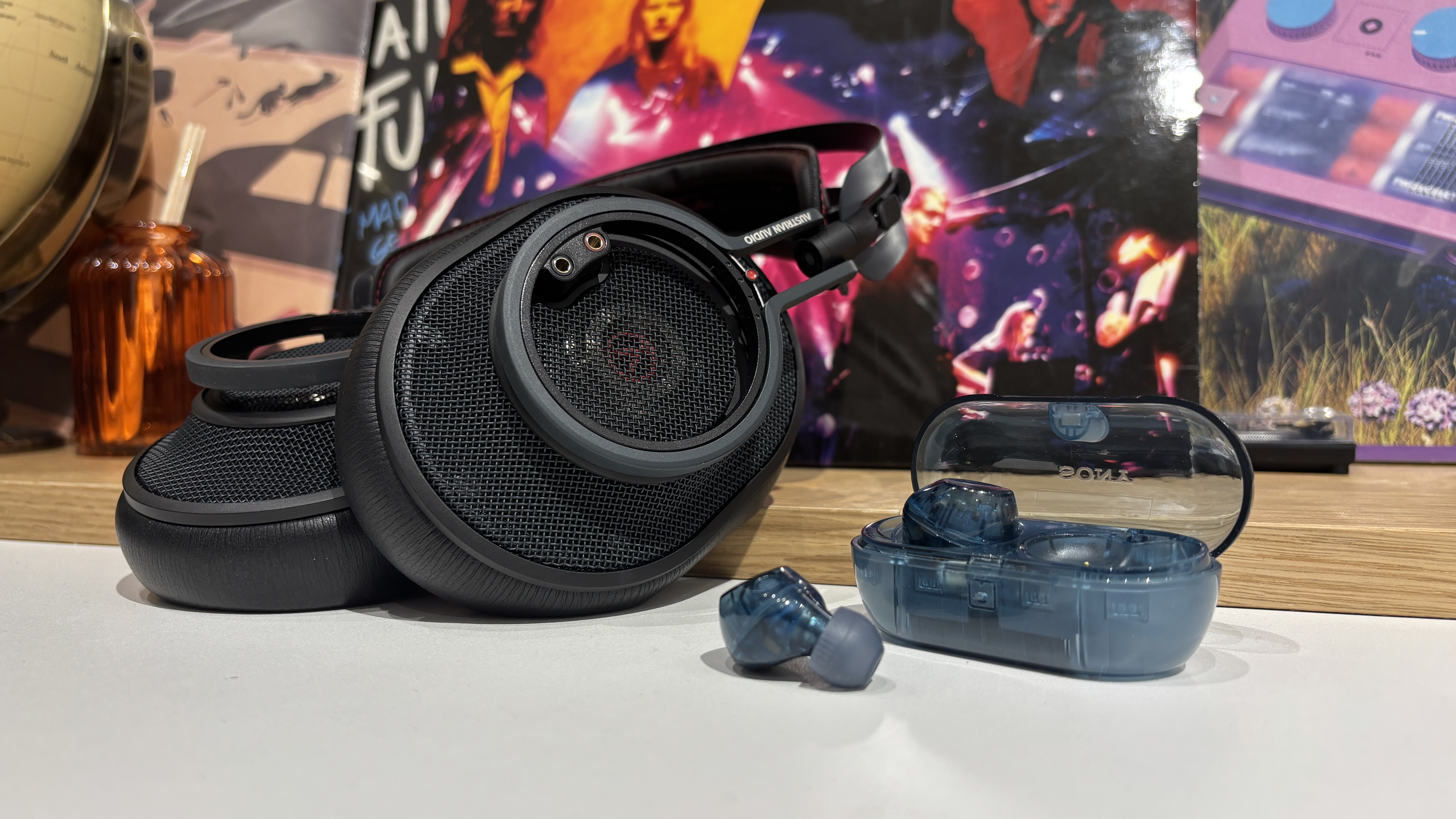What Hi-Fi? Verdict
The Mark Levinson No.5105 is beautifully built and lovely to use, with a sound that's clear and insightful albeit lacking a little verve
Pros
- +
Terrific build and finish
- +
Simple to set up and use
- +
Precise and confident presentation
Cons
- -
Values control over entertainment
Why you can trust What Hi-Fi?
When we think of the history of high-end audio, it’s not long before the Mark Levinson brand comes to mind. The company was formed in 1972, and along with the likes of Krell, Audio Research and Wilson Audio, it established the top-end market sector we know and love today.
In the early years, Mark Levinson’s amplifiers embedded the brand firmly in enthusiast’s minds, a reputation reinforced by a series of fine digital products through the 1990s. Turntables have never been part of the equation, at least until recently.
Mark Levinson waited until 2017 to release its first turntable, the No.515. This record player is still in production and currently retails for £9999 ($10,000, AU$20,0000), a considerable amount that gives the company a fair bit of leeway to introduce something more ‘affordable’ – a relative term, of course, that in this case refers to just over a third off the original’s price.
Build
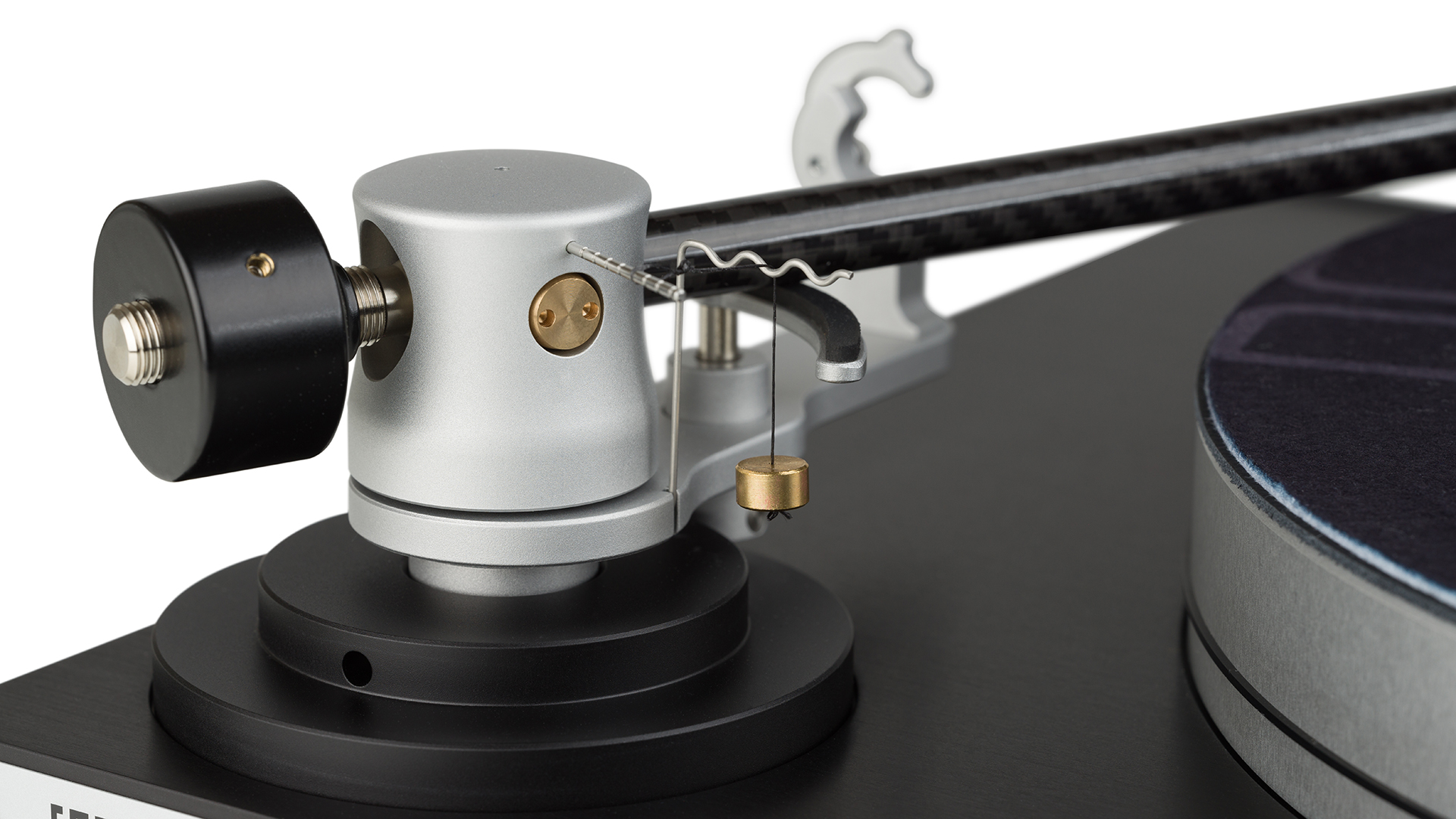
The No.5105 isn’t simply a stripped-down version of its older brother, though. It’s an all-new design intended to be an ideal analogue source for the company’s 5000 series of components.
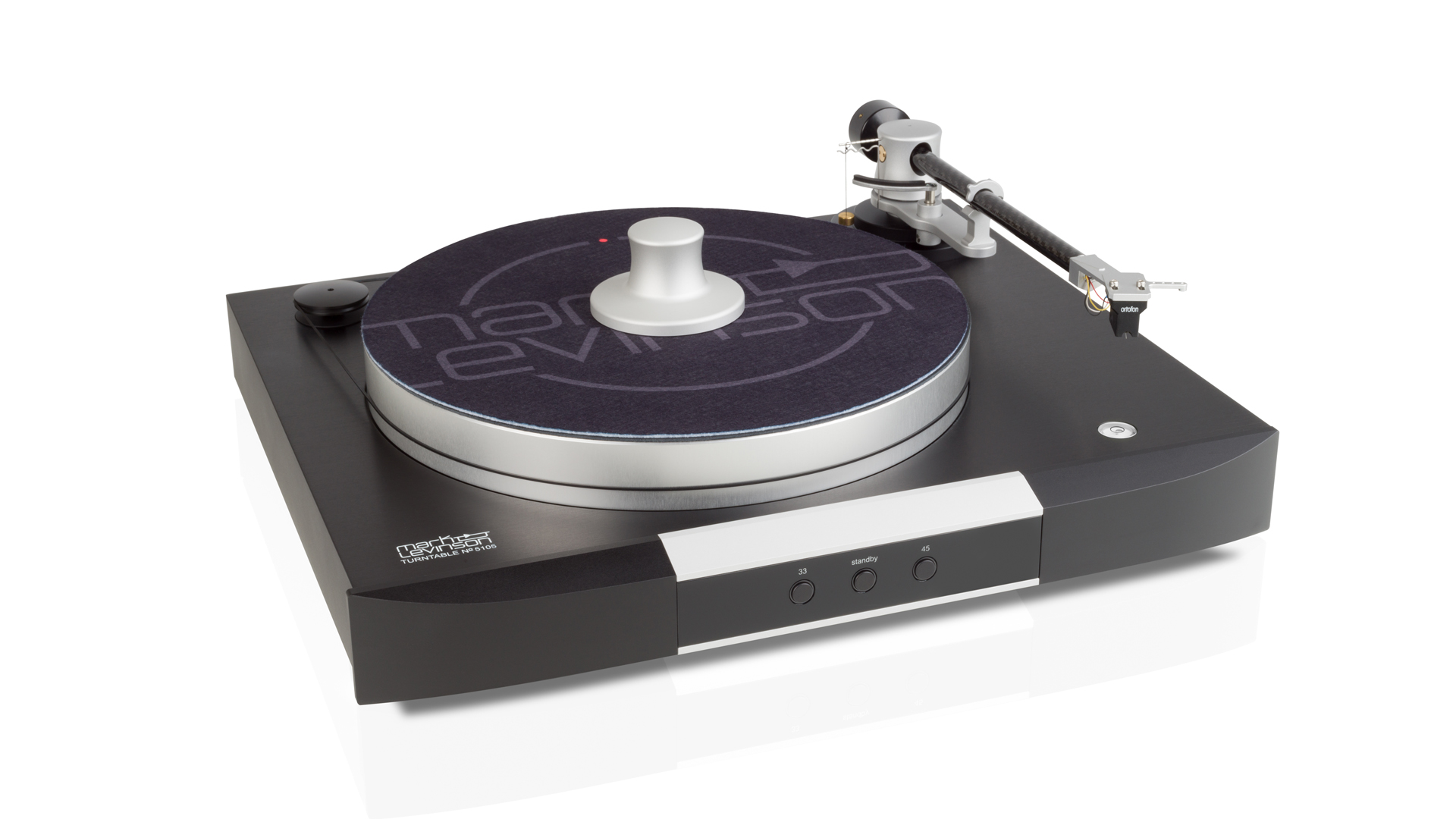
Drive system Belt drive with integrated DC motor
Arm 10in gimbal bearing, carbon fibre arm tube
Cartridge Ortofon Quintet Black S moving coil (optional)
Speeds 33⅓, 45rpm
Electronic speed change Yes
Dimensions (hwd) 15.4 x 44 x 39.5cm
Weight 34kg
The skillset required to make a good record player is different to that needed to make quality electronics, so it makes sense for a company such as Mark Levinson to work with a turntable specialist for such products. The company was open about the partnership with VPI for the original deck but has been more tight-lipped about its partner for the No.5105, saying only that it’s a manufacturer from Germany.
Whoever it is, the partnership has done a great job with regards to the basic engineering, build and finish of this deck – it really is lovely. The plinth is made of an immaculately machined block of nearly 50mm thick aluminium. It feels immensely solid and goes a long way to explaining the No.5105’s hefty 34kg weight.
The front panel is another chunk of aluminium, in this case around 25mm thick, bead blasted and black anodized. There’s a small tinted glass window embedded in it, echoing the styling of other 5000 series components, and this is home for the speed and standby controls. The deck sits on three adjustable feet, and there’s even a spirit level built-in on the top of the plinth to make it easier to get everything level.
The deck’s power supply is housed in the plinth and the carefully mechanically isolated DC motor has enough in the way of torque to get the heavy platter up to speed in a matter of seconds.
That platter is made of aluminium and weighs a considerable 6kg. On the underside, it’s loaded with damping material to control resonances. This platter is topped by a thin carbon fibre-look polymer mat covered with some rather brash branding that seems out of place with the overall sophistication of the deck. That extra branding is also unnecessary given that the front corner of the plinth already tells us that this is a Levinson product.
The platter is attached to a diamond-coated, stainless steel spindle that’s claimed to be much harder and so prone to lower friction than a conventional stainless steel shaft. The bearing, in which the spindle sits, is paired to it during manufacture to ensure tight tolerances.
It’s all topped off by a heavy record clamp that’s shaped to remind us of the distinct volume controls on the company’s amplifiers. The clamp is made of aluminium with a brass insert to add more mass. We listen to the No.5105 with and without the clamp in place, and prefer the extra sonic solidity and focus using it imparts.
The arm is another classy piece of engineering. It’s a 25cm design with a carbon fibre arm tube fused to a solid aluminium headshell. If you choose to go for the optional Ortofon Quintet Black S moving coil cartridge, as we have, then it will be factory-fitted right down to the tracking force being set.
Features
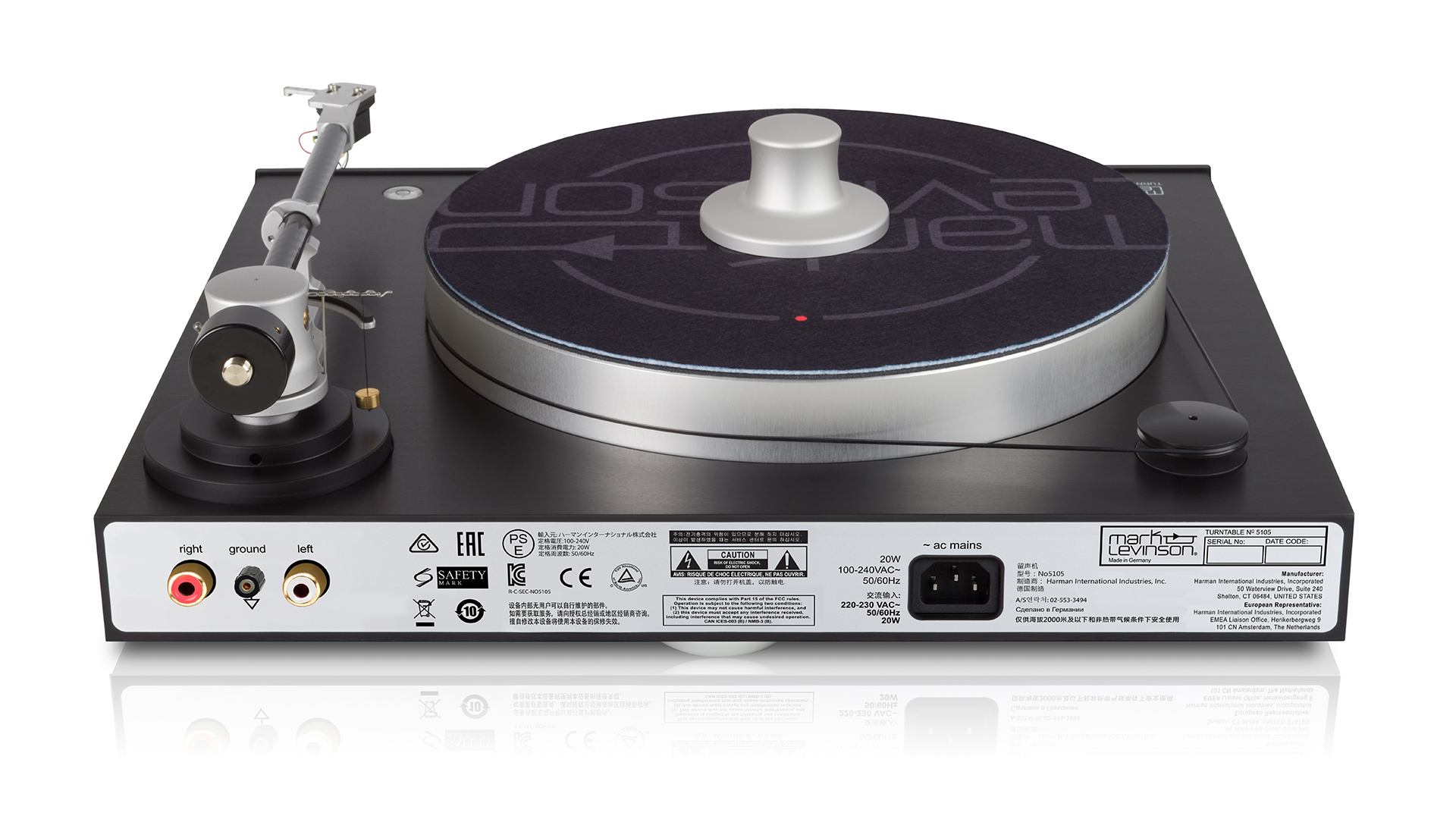
We’ve noticed a move from turntable manufacturers to make their decks easier to set up and use, and that can only be applauded. In the past, you either had the dealer assemble your deck, or be confident enough in your abilities to do the job yourself – great if you have the knowledge and experience, but no fun if you’re simply interested in playing your vinyl.
Like any record player, the No.5105 benefits from careful placement away from the speakers and other sources of vibration. A good, level support is a must. That said, we’re impressed by the turntable’s resistance to feedback, which points to a well-controlled chassis and good levels of isolation.
If you want to hear this record player at its best, a suitably talented partnering system is essential. We plumb the No.5105 into our reference set-up of Cyrus Phono Signature/PSX-R2 phono stage, Burmester 088 preamp (with MC phono module)/911 Mk3 amplifier and ATC SCM50 speakers. We also have on hand Vertere Acoustics' Phono-1 phono stage, Naim’s Supernait 3 and ProAc’s Response D2R to gauge how this player performs in a more modest set-up.
There’s always a danger of a manufacturer struggling when it steps out of its comfort zone, but that certainly isn’t the case here. We get the impression that Mark Levinson set out to deliver a highly polished and easy-to-use, premium record-playing package, and that is exactly what it has done. The No.5105 is no harder to get working than a typical budget Pro-Ject or Rega, and that’s something to be praised.
With the cartridge pre-fitted and tracking weight already set, all we have to do is fit the platter and square-sectioned drive belt and hang the bias weight in place. Be careful when you put the drive belt on, though; make sure the belt stays free from contamination and that it doesn’t twist unduly once fitted.
Obviously, power also needs to be connected, but it’s a little surprising that Mark Levinson doesn’t supply a signal cable in the box, given how complete the rest of the package is.
While most enthusiasts would probably prefer to use their own favourite lead, the electrical demands of a phono signal will mean that not all interconnects will work well. Of course, you’ll also need to connect an earth wire to avoid hum in most installations. Still, despite all this, we’re listening to records in less time than it takes to make a nice cup of masala chai.
Sound
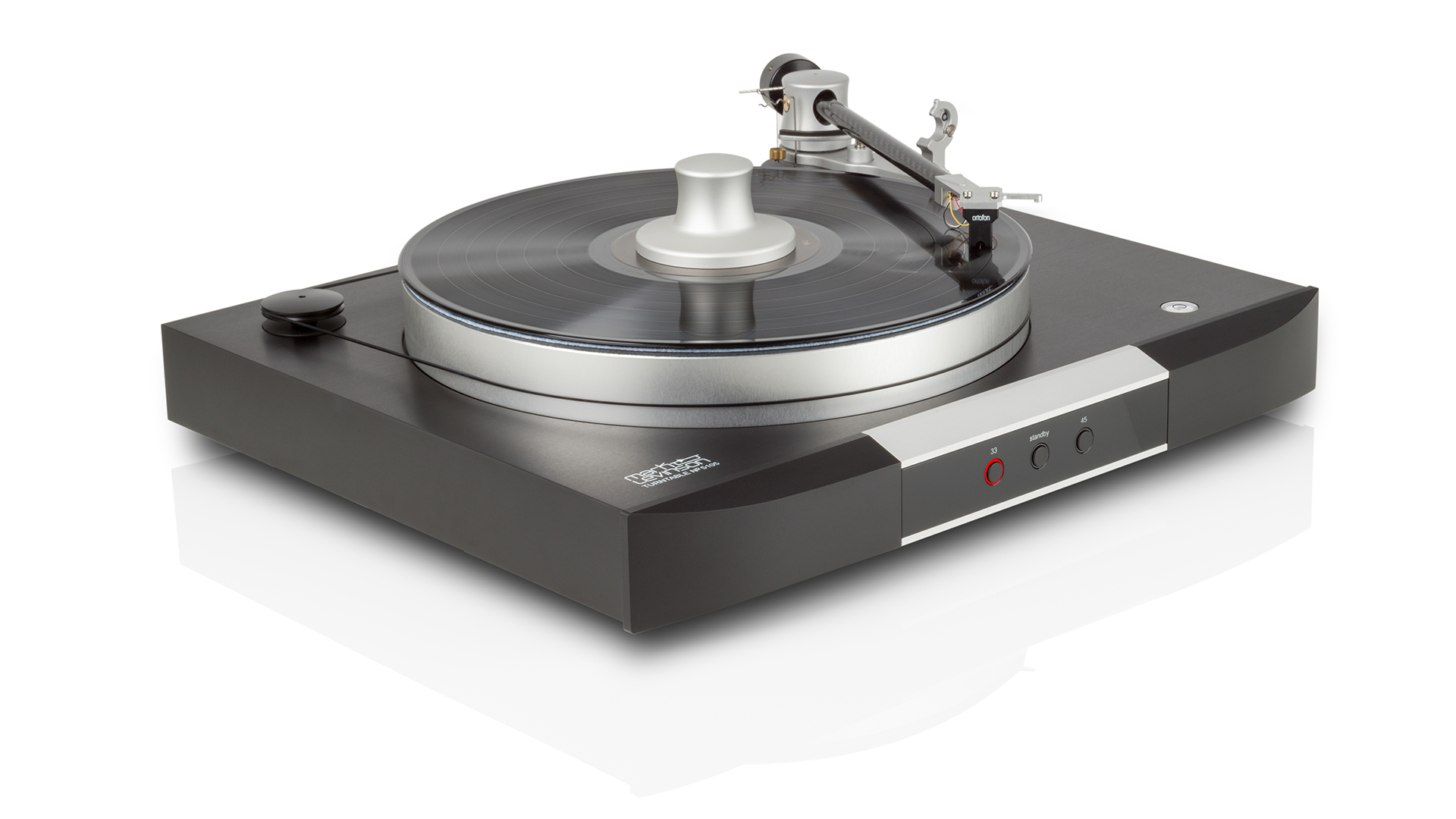
If you’re looking for sonic authority, this could well be the deck for you. We play Beethoven’s Fifth Symphony and are impressed with the boldness of the presentation. The No.5105 sounds muscular, delivering the dynamic swings of the music with authority.
There’s a good sense of scale here, and we’re pleased with the package’s ability to render a stable yet layered stereo image. Instruments are nicely focused and their positioning doesn’t start to blur when the music becomes more demanding.
A large part of a record player’s tonality comes from the cartridge, and here the Ortofon Quintet Black S delivers exactly what we’ve come to expect from the Danish brand’s more premium offerings. It’s a clean, even-handed performer that errs slightly on the cooler side of neutral, which suits the turntable’s character well. When mounted in the No.5105, we have no issue with the cartridge’s detail resolution or its ability to track low-level instrumental strands in a complex piece of music. It’s a good choice for the turntable design and works well in context.
This Mark Levinson sounds big-boned and composed no matter what we throw at it. There’s good insight when we play Orff’s Carmina Burana, the turntable able to communicate the over-the-top drama of this piece well. Singers come through with a convincing presence and there’s no issue in revealing subtle instrumental or vocal textures.
The No.5105 is an analytical performer in the ballpark of class-leading turntables such as the SME Model 6 and VPI Prime 21+ when it comes to information retrieval, but it still falls short of being a totally convincing all-rounder. To achieve that, the deck’s presentation needs more enthusiasm and rhythmic coherence.
That much is obvious when we play Bob Marley’s Stir It Up. Here, the No.5105 gives the song a less playful feel and consequently loses some of the music’s easy-going charm. Individual notes are well enough defined, but they don’t quite come together to communicate the song’s lilting rhythm or the allure of Marley’s distinctive vocals. Basslines in particular lack a degree of articulation and expression, leaving the overall result a little leaden.
We listen to a range of music, from Miles Davis’s Kind Of Blue and Holst’s The Planets through to Four Tet’s There Is Love In You, and find that the No.5105 has distinct preferences. It excels when the music demands a large-scale and powerful presentation. There’s plenty of attack here and it’s matched to a pleasing degree of control and composure. With suitable recordings, this Mark Levinson is a convincing performer delivering a pleasing level of clarity.
But, ask the deck to have a bit of fun and it doesn’t quite have the expressiveness and dexterity to do so. It even makes the Four Tet album sound a bit lifeless, which it certainly isn’t.
Verdict
Make no mistake, there's plenty to admire here. The No.5105 is thoughtfully made and a pleasure to use, not to mention unquestionably capable in the sound department. With the right music, it delivers a strong performance. But it doesn’t quite hit the highs in this market in the way the company’s electronics routinely manage to hit theirs. That’s enough to make it worth a listen rather than an essential buy.
SCORES
- Sound 4
- Features 5
- Build 5
MORE:
Read our guide to the best turntables
Read our SME Model 6 review
Read our VPI Prime 21+ review
Read our Vertere DG-1/Magneto review
What Hi-Fi?, founded in 1976, is the world's leading independent guide to buying and owning hi-fi and home entertainment products. Our comprehensive tests help you buy the very best for your money, with our advice sections giving you step-by-step information on how to get even more from your music and movies. Everything is tested by our dedicated team of in-house reviewers in our custom-built test rooms in London, Reading and Bath. Our coveted five-star rating and Awards are recognised all over the world as the ultimate seal of approval, so you can buy with absolute confidence.
-
Friesiansam Reply
Perhaps they went to Clearaudio but, don't want to admit they're using the same manufacturer as Naim.What Hi-Fi? said:The company was open about the partnership with VPI for the original deck but has been more tight-lipped about its partner for the No.5105, saying only that it’s a manufacturer from Germany.

